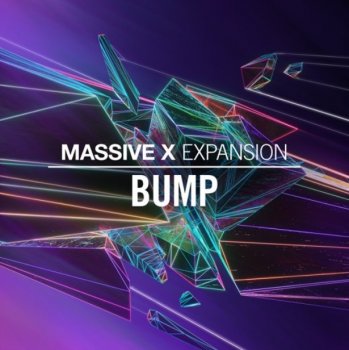

- #NATIVE INSTRUMENTS MASSIVE X MANUAL#
- #NATIVE INSTRUMENTS MASSIVE X UPGRADE#
- #NATIVE INSTRUMENTS MASSIVE X FULL#
- #NATIVE INSTRUMENTS MASSIVE X SOFTWARE#
- #NATIVE INSTRUMENTS MASSIVE X PC#
We will look at the available FX options later. Outputs from routing objects that produce output can be directed to any of the three slots or can bypass them entirely. This can be configured with the FX modules in parallel (X+Y+Z), in series (X->Y->Z), or a combination (X+Y->Z). These are stereo effects, so don’t infer the name means non-stereo. On the right is the relatively straightforward Monophonic Area in which the three all-voices FX modules reside.
#NATIVE INSTRUMENTS MASSIVE X FULL#
We will begin with the signal routing system, the interface of which can be seen in the full UI screenshot above. The bottom half deals either with voice management, routing or modulation sources depending on what tab is selected. The content of some subpanels will change as options are selected, but the top-level layout is constant. Roughly speaking, Massive X deals with the first three items in the top half of the UI and the last three in the bottom half. A flexible and powerful modulation capability.Voice management (poly-mono, portamento, unison and more).A signal routing system tying the above three things together.Per-voice tone manipulation (filters, FX and more).Massive X can be thought of as having six major functional areas: So, my apologies for the awkward timing, but, as the saying goes: the show must go on. There might be a few other small errors in this article due to version improvements as well. In particular, the new version has envelope shapes that are said to be graphically interactive, whereas the version 1.0 envelopes are depicted as static legend images.

Also, there have been several improvements to the UI, but the screenshots here are from version 1.0.
#NATIVE INSTRUMENTS MASSIVE X MANUAL#
In any case, although the manual is now here, I have not had time to do more than a cursory review of it, so I hope the reader will understand (and cut me a little slack). At least that issue has been put to rest. It’s good that NI finally took the time to WTFM. Since day one, I have been impatient to read the full manual, and I have no doubt a lot of others were also anxious to RTFM.
#NATIVE INSTRUMENTS MASSIVE X SOFTWARE#
I think it was totally unacceptable to release a complex piece of software with no documentation, or, in the case of Massive X, with only a few select chapters of a full manual having been made available. I hope this tardiness does not indicate a trend. The most notable deficiency it corrected was to finally offer (months after initial release) a complete user manual. Just a few short days before this review needed to be finalized for web posting, NI released version 1.1 of Massive X. Owners of Komplete 12 and Komplete 12 Ultimate may download Massive X for free. Massive X is also included in Komplete 12.
#NATIVE INSTRUMENTS MASSIVE X UPGRADE#
Massive X lists for $199 USD and an upgrade for Massive owners is $149 USD, but Native Instruments has decent sales from time to time. A 32-bit-compatible version is not available.

#NATIVE INSTRUMENTS MASSIVE X PC#
Massive X runs as a hosted plug-in in all 64-bit mainstream DAWs on PC or Mac. It expands upon a number of features found in Massive, adds some exciting new ones, but, in a few areas, delivers a bit less than the predecessor. Massive X is not backward compatible it cannot run Massive presets. But it’s far more than an upgrade of the old synth. Massive X adopts that capability and picks up a number of others. The WT capability was not the only attractive or ground-breaking feature of Massive, but it was a defining one. In any case, Massive was first released in 2007 and has been doing modern-type wavetable synthesis since way before the WT obsession began (u-he’s Zebra 2 is the other WT synth that comes to mind that’s been around about as long). Early instruments designated as wavetable synths had only one waveform, but today “wavetable” inevitably means that multiple, morph-able waveforms are on offer. Note that the term “wavetable” has come to imply a capability to use an array of single cycle waveforms that can be seamlessly morphed through using manual or automated modulation. New wavetable implementations were popping up all over the place. Wavetable synths were all the rage about three years ago. Massive X has some big virtual shoes to fill. Although I don’t know what virtual synth has had the greatest number of third-party sound sets created for it, if I had to bet money, I’d pick Massive without much deliberation. In this article, we will take a close-up look at Massive X, the successor to and namesake of one of the most widely used virtual synths ever. We take a close-up look to see if it’s worthy of the name. Massive X is the long-anticipated successor to Massive, one of the most widely used virtual synths of all time.


 0 kommentar(er)
0 kommentar(er)
